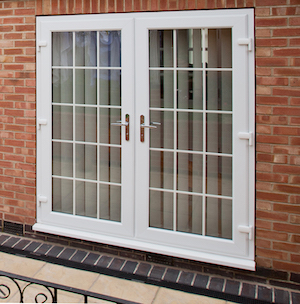
French Door Maintenance
Overview
-
Sectors IT sector
-
Posted Jobs 0
Company Description
What’s Holding Back What’s Holding Back The French Door Installation Industry?

A Comprehensive Guide to French Door Installation
French doors are a popular architectural feature that includes beauty, design, and performance to any home. These doors not just create a smooth shift between indoor and outside areas however also improve natural light, making a room feel more large. This short article will direct house owners through the French door installation procedure, offering essential tips, detailed guidelines, and responses to often asked questions.
What Are French Doors?
French doors typically consist of a pair of doors that are depended upon either side and open external or inward, creating a broad entranceway. They include big glass panels and are typically used to connect an interior space to the patio or garden. House owners value their visual appeal and functionality, as they can present fresh air and light into the home.
Tools and Materials Needed for Installation
Before beginning the installation of French doors, it is important to collect the required tools and products. Here’s what you will require:
Tools:
- Measuring tape
- Level
- Hammer
- Screwdriver
- Drill
- Circular saw (if trimming is needed)
- Pry bar
- Caulking weapon
- Shatterproof glass
- Stud finder
Products:
- French door system (pre-hung)
- Shims
- Wood screws
- Exterior door hinges
- Weather condition removing
- Cut molding
- Paint or stain (if wanted)
Step-by-Step Installation Guide
The process of setting up French doors can be broken down into a number of essential steps.
1. Preparation
- Select the Right Doors: Ensure that the French doors you have picked fit the opening.
- Remove Old Door: If changing an existing door, utilize a lever to remove it and take out any trim.
- Tidy the Door Frame: Ensure the frame is clean and devoid of debris for a better fit.
2. Measure the Opening
- Check the Dimensions: Measure the height and width of the door opening to validate it aligns with the French door unit requirements.
- Examine for Level: Use a level to make sure the opening is even. If it is not, changes may need to be made.
3. Install the Door Frame
- Position the Frame: Place the French door frame into the opening, guaranteeing it is level both horizontally and vertically.
- Place Shims: Use shims to secure the frame. Position them at the hinge places and along the latch side.
- Protect the Frame: Once the frame is level and plumb, connect it to the existing structure with wood screws through the frame into the wall studs.
4. Connect the Doors
- Install Hinges: Depending on the design, connect the hinges to the side of the frame and the doors.
- Hang Doors: Lift each door into place and protect it with screws.
- Test the Operation: Open and close the doors to ensure they move smoothly without rubbing versus the frame.
5. Add Weather Stripping
- Seal Gaps: Install weather condition removing around the door trim to avoid drafts and improve energy efficiency.
6. End up the Installation
- Include Trim: Attach trim molding around the door frame for a refined look.
- Paint or Stain: If desired, paint or stain the doors and trim to match the existing design.
7. Check and Clean
- Final Check: Ensure all screws are tight and the door operates properly.
- Tidy up Debris: Remove any tools and debris from the workspace.
Benefits of Installing French Doors
- Increased Natural Light: French doors are primarily made of glass, enabling plentiful natural light to enter your home.
- Improved Aesthetics: They include a touch of elegance and elegance to any area.
- Improved Airflow: When opened, French doors develop a breezy and open atmosphere.
- Energy Efficiency: Modern French doors feature energy-efficient glass, reducing heating & cooling costs.
- Increased Property Value: Installing trendy French doors can enhance a home’s resale value.
FAQs About French Door Installation
1. For how long does it require to set up French doors?
The installation process can take anywhere from a couple of hours to a complete day, depending upon the property owner’s experience and whether any custom changes are required.
2. Do I need a permit to install French doors?
In many locations, a permit is not required for door replacements. Nevertheless, it’s suggested to check local building regulations before beginning installation.
3. Can I install French doors by myself?
While DIY installation is possible, it might be useful to employ a friend for assistance, Repairmywindowsanddoors.co.uk particularly throughout lifting and positioning the door.
4. What should I do if my door frame is not square?
If the door frame is not square, you might require to utilize extra shims or think about reinstalling the frame to ensure the doors operate correctly.
5. How do I maintain my French doors?
Routine cleansing of the glass and hinges, in addition to routine checks of weather removing and seals, will help preserve the performance and look of your French doors.
Installing French doors can considerably enhance the visual appeal and performance of a home. With appropriate preparation and attention to detail, house owners can successfully set up these classy doors and take pleasure in the advantages they bring. Whether looking for to enhance energy efficiency or just indulge in the appeal of natural light, French doors are an ageless addition to any house.
By following the actions outlined in this guide and comprehending the advantages and maintenance, homeowners can welcome the beauty of French doors for many years to come.